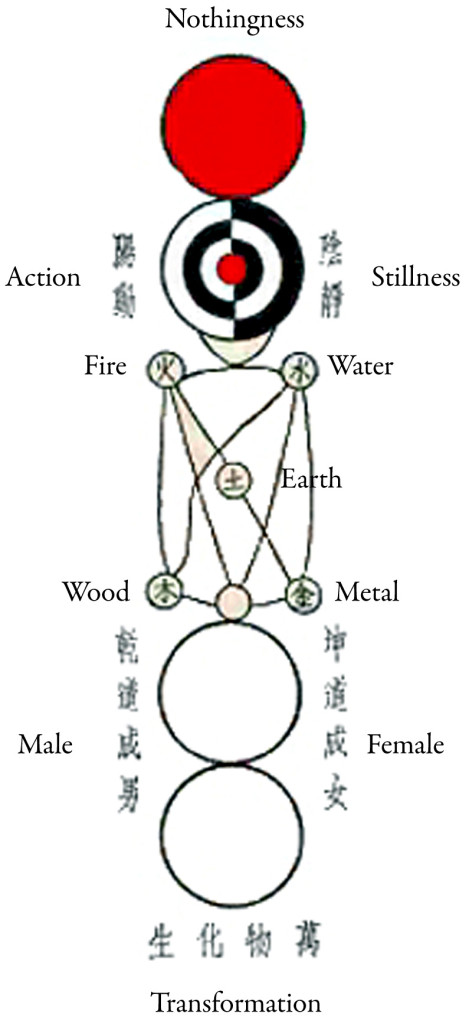In October 2013, the internationally-acclaimed t’ai chi master, Huang Chungliang, performed an original dance composition at the National People’s Congress in Beijing. This dance artistically connects the five elements of traditional Chinese philosophy (earth, metal, wood, fire and water) to the five principles of peace written by Premier Zhou Enlai of China (respectively — integrity, non-aggression, equality, balance and neutrality). The occasion was jointly sponsored by the Zhou Enlai Peace Institute and the Central Committee, and included senior diplomatic representatives from Turkey, Indonesia and Ghana.
Dance of the Five Principles of Peace
dedicated to Zhou Enlai
created by Huang Chung-Liang
for the Celebration of the
60th Anniversary of the Five Principles
China National People’s Congress
Beijing, China
October 20, 2013
Article from “The Empty Vessel”
Journal of Tao Philosophy by
Chungliang Al Huang about this event

The Taiji, drawn 1000 years ago by Zhou Dunyi,
an ancestor of Zhou Enlai
The Five Principles of Peace is a diplomatic document written by Premier Zhou Enlai. It is designed as the basis for productive, peaceful relations among all nations.
Because the former Premier was also a student of philosophy, his political thinking was guided by universal forces present in nature.
This dance recognizes the depth of Zhou Enlai’s insight. It connects the Five Principles of Peace to the Five Elements of change and nature, according to traditional Chinese philosophy.
The live solo performance by Chung-Liang Huang uses the ancient art of conscious movement and stillness, t’ai chi, one of China’s great cultural gifts to the world. The dance shows Chung-Liang’s lifetime of high respect for Premier Zhou Enlai, and his commitment to lasting peace between the people of China and the people of the world.

Principle of Peace:
1) Mutual respect for each nation’s territorial integrity and sovereignty.
Supporting Element:
土
Earth; our root and beginning — the primary element, our birth and source, the land upon which we walk. We respect this land, and the land of all other people. We recognize the right of all to walk upon the land of their origin and seek our destiny there.
Principle of Peace:
2) Mutual non-aggression
Supporting Element:
金
Metal; generated from the earth, it rises in infinite varieties of self-expression. The individual self is creative and powerful, when it is balanced with the importance of our larger self — in society, humanity and nature. The power of self should be used to support the prosperity of peace, not to judge, attack or restrict others.
Principle of Peace:
3) Mutual non-interference in each other’s internal affairs.
Supporting Element:
水
Water; generated from metal. Water flows around all obstacles, humbly seeking the lowest position, with great power to form change in the earth. Water combines with the other elements, but does not interfere in their essential nature.
Principle of Peace:
4) Equality and mutual benefit
Supporting Element:
木
Wood; generated from water. Wood is used equally by all to create wealth and shelter, for education preserving tradition. Understanding this element helps all to find equality of opportunity, to extend generosity to all, regardless of whether they appear great or small.
Principle of Peace:
5) Peaceful co-existence
Supporting Element:
火
Fire; the element that springs from wood, and combines with all the other elements. Fire provides heat for the home, security for the family, light for the spread of knowledge, and inspiration for the soul.


